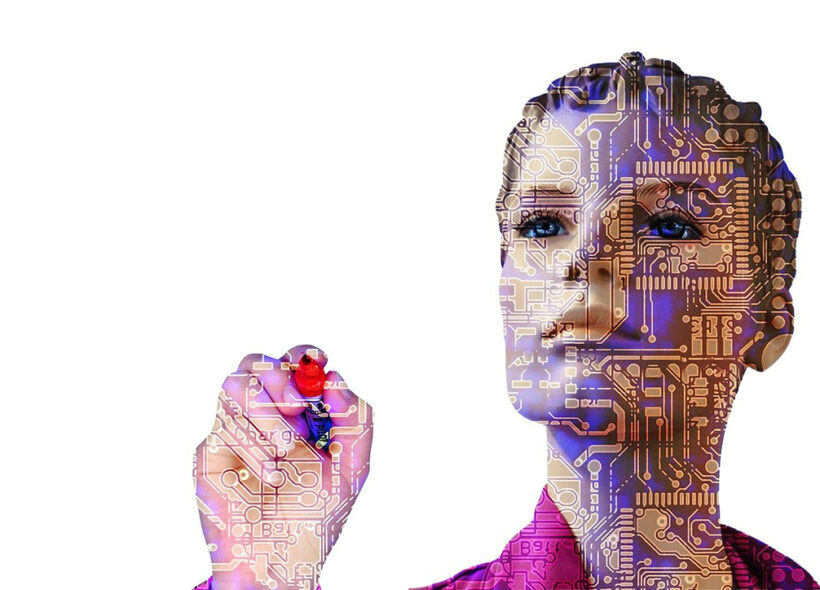We live in a time of change, of constant transformation and uncertainty about the future. But we have very little understanding of the direction and possibilities of change because our heads only see photographs, only partial snapshots of each moment and do not end up seeing the whole, the complete film.
Why does this happen? Because in the emergence of Western culture, we were able to isolate movement, to abstract static concepts and to be able to work with them. That was a giant leap forward and made possible the technology we enjoy today. But that same technology, the child of that binary and static vision, today needs to take new and more complex steps in order to continue advancing.
Let us pause for a moment. When we say binary vision, what does it mean? It means the black-white, friend-enemy, positive-negative, etc. vision. This view of opposites eliminates the third element, the grey, the plus or minus and so on. By the way, the binary view is the one used by most of our computers and although it is limited, it has allowed us to leave our planet. Today there are already quantum computers that work with a triple vision incorporating the intermediate element.
What do we mean by static? It is the timeless, still vision, considered as a truth in itself. This view implies analysing a situation or issue from a specific point of view that is NOT clarified and generally does not change with time or context. Examples of static views abound. One of them: “The best way to secure a young person’s future is a diploma”, or: “Climate change does not exist, there have always been fluctuations”.
So today we have scientists with new methods, new visions and new understandings. But we ordinary mortals continue to think in a binary and static way, without understanding processes.
What consequences does this have? It has serious consequences because, unable to understand the direction of events, we feel at the mercy of events. Fatalism sets in and, in addition to being confused, we experience helplessness.
If we wanted to develop a “process vision”, where would we start? The first thing would be to look a little more closely. If we want to understand how a situation is progressing, we need to observe it carefully, looking not only at its parts or details but also at the speeds of those parts or details.
Let’s look at a simple example: if I want to understand the process of the Condominium Board of my building, I need to know who is on it and HOW they have behaved so far. The first step is nothing new, it is something we do on a daily basis, we all give our opinions about our neighbours and we know their opinions in greater or lesser profundity. However, remembering those opinions over time and having their participation in meetings requires an additional effort.
Here we come to the key issue of process vision: the components, the constituents, the parties to any situation do NOT have stable speeds. Some, as the saying goes, ” they belong to their father and their mother “. Components that were moving slowly, suddenly acquire more speed (or vice versa). For example, in a typical family, when the children grow up, their “speed” increases as they start new relationships, then there is a stage of certain stability when these relationships are consolidated, and after a while the family experiences a total revolution with the appearance of the grandchildren. It is still a family, but the change has been resounding and it was certain elements that accelerated.
It is easy to see it in situations close to us, but it is more difficult to see it in the society that includes us and to foresee future transformations if we see the acceleration of certain “components”. (Note: by components we mean the parts of something, be they mechanical parts, aspects of a situation or people involved in what we are interested in at a given moment).
Once we have discovered the components that are accelerating, we need to discover the trends of these elements. We can ask ourselves, where are they going, in which direction do they point? And logically ask ourselves why this is likely to happen.
Finally, the intention of what we have studied will appear clearly, and in discovering it, the process of change ceases to be intellectual gibberish and becomes a new experience of understanding.
This method is NOT an oracle, it does not predict anything, nor is it error-free. In many situations, several possible responses can be arrived at. They are simply methodical guidelines for thinking more clearly. It is possible that we may make mistakes, that elements not taken into account may appear, or that the future may once again surprise us with unexpected situations.
But it is worth trying to understand where our interests lie and to do our best to conceive possible futures, thus escaping the trap in which we live through fragmented, disconnected and sometimes lying news.






